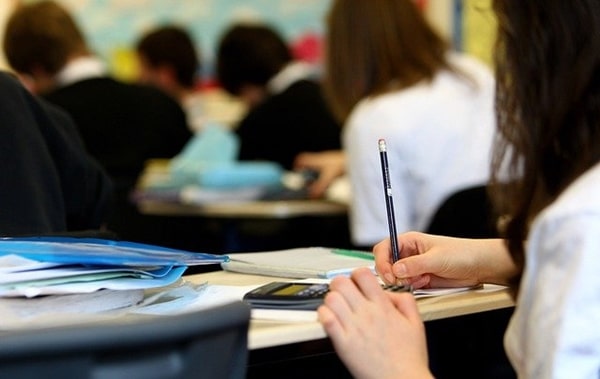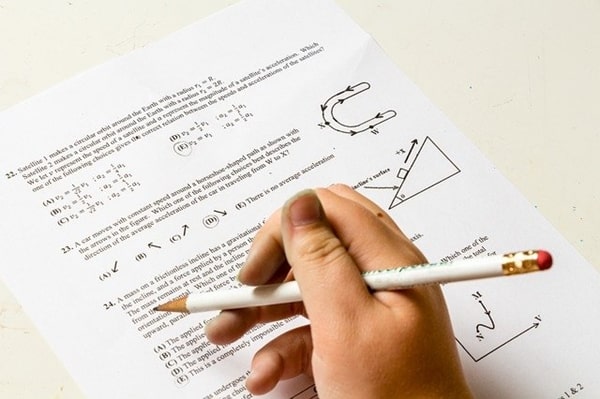ICSE VS CBSE: Which one to Target?
The Board of Educations is an essential part of the schooling community. They are the organizations that certify schools and give them the authority to teach students. Board of Educations or School Committee’s generally constitutes board of directors or trustees.
The elected council is responsible for determining the educational policy of a certain region like a city, state, or province. The two most common and famous boards in India are the Central Board of Secondary Education (CBSE) and the Council for the Indian School Certificate Examinations (CISCE).
The Central Board of Secondary Education was established on 3rd November 1962. It saw its beginnings as Uttar Pradesh Board of High School, the first educational board of India, in 1921. In 1929 a joint Board of Education was established known as the ‘Board of High School and Intermediate Education, Rajputana’ which was later changed into CBSE in 1952.
It is a national level board of education for all schools, private and public. The board comes under the direct management of Union Government of India. The board has about 20,000 schools in India and 220 schools in foreign countries under its affiliation. Due to its popularity and the sheer number of schools which are affiliated to it, CBSE is one of the most favourable boards in India or to Indian parents living abroad.
The Council for the Indian School Certificate Examinations (CISCE) is another board of education established in India and is recognized as a privately-held national level board of school education. CISCE was established on 3rd November 1958 and is responsible for conducting the Indian Certificate of Secondary Education (ICSE) and Indian School Certificate Examinations for 10th and 12th grade respectively.
The prime focus for establishing CISCE was to create an organization responsible for administrating examinations conducted in India by the University of Cambridge. The board today has about 2,300 schools affiliated with it.
Now, Let’s compare the two CISCE vs CBSE by the following point and see how they both are different :
1) Medium of Instruction
The medium of Instruction is in respect to the language that is accepted by the board which can be used to teach the subjects in schools.
As a nationally recognized board, CBSE allows the use of English and Hindi as a medium of instruction.
Whereas in the case of ICSE, however, the schools are asked to strictly adhere to English as a medium of instruction.
2) Board Recognition
Out of the two boards, CBSE has a better footing and recognition when compared to ICSE.
As a nationally recognized board of education, CBSE has a better footing and reach in India and the neighboring countries.
ICSE as a privately functioning board has been known to have a smaller presence, however, recently there has been an increase in its recognition as many foreign education systems have started to recognize them as equal to senior-level school examinations.
3) Curriculum
The syllabus of both the boards, though cover all necessary aspects of a child’s education, varies from each other based on the final goal. The Central Boards curriculum is more focused on the students of India who plan on pursuing further education in the nation.
The curriculum is so designed that it prepares the student for competitive examinations like IIT-JEE, AIEEE, AIPMT, etc. Due to this nature of the syllabus students who hold higher secondary certificates from CBSE schools are accepted in colleges all over India.
Moreover the syllabus for CBSE is also said to be easier and more refined and compact. The subjects are so designed that they cut straight to the meat of the matter.
ICSE’s syllabus has been so created so that the student gets the complete experience of learning. The curriculum, though lengthy and very well detailed, gives the student the complete overview as well as in-depth knowledge of the subject that they are studying.
Along with being theoretically sound and detailed the curriculum also covers the practical application of what the child is studying.
For ICSE it is also said to have its prime focus on the English Language and their English curriculum is said to be superior, including literary work of many historic writers. Due to this, the students of ICSE board find it easy to crack papers like TOEFL and SAT and has a large recognition in foreign colleges and universities.
4) Marking Scheme
The marking scheme for each board is different. While CBSE used to abide by the percentage system, the board changed to a nine-point scale grading system to grades its students.
Though the grading system corresponds to a range of marks, the actual marks are never made public to the students on their mark sheets and only the grade point is given.
Following is CBSE’s grading system
Under the new grading system, the board will carry out a subject-wise grading system and no cumulative grade will be awarded which has been the system for CBSE mark sheets since before the new system.
ICSE’s grading system is a bit different from the one mentioned above. One difference is that the ICSE board provides its students with grades and marks in their final year’s mark sheet.
The other difference is that the child assessed on two grounds known as Internal and External Assessment. External assessment pertains to the examination that the board conducts for its students.
Pass certificate will be awarded to students who write the examination for six subjects and score a minimum of pass in at least five subjects, English is one of those five subs.
The grading system of the external assessment in ICSE is as follows
Internal Assessment is where the board’s education system focuses on the practical aspects of the child’s education. This assessment is based on the performance in what is known as Socially Useful Productive Work and Community Service more commonly known as SUPW and COMMUNITY SERVICE.
The grades are given as follows
5) Exam Pattern
The examination pattern for both the boards has gone through many changes over the years based on the requirements of the student and keeping the board’s prime principles in mind.
The Central Board’s exam pattern has been quite standard for many years now. The subject will be scored out of a total of 100, part of which will be written and another practical examination score. However, the exam pattern has gone through some major changes in the last few years and most of them were made to give the students a fair and stress-free exam experience. Following are some of the changes made
- The new pattern would focus on testing the analytical and reasoning skills of the student instead of rewriting what they read in the textbooks.
- More short answer-type questions will be included that range from 1 to 5 marks.
- The two-level examination will be held instead of a 100-mark paper. The internal exam will be conducted of 20 marks and the final exam will be of 80 marks only. To qualify for the final paper, the student must clear the internal paper.
- The new pattern will only apply to Mathematics and English.
The mathematics paper will have one additional change. Students will be given the option of giving mathematics – standard paper or mathematics – basic version, which is a simpler paper.
ICSE boards exam pattern is different when compared to CBSE. While CBSE gives a choice of subjects when students are entering 11th grade, ICSE gives this option much before.
An ICSE student must give seven papers divide amongst three groups of subjects.
Group 1
It Compromise of the compulsory subjects, viz, History, Civics, Geography, English and Second Language. A student must have 4 subjects from this section.
Group 2
It includes two optional subjects. These subjects must be chosen from a pre-determined list.
Group 2 includes more academic subjects like Mathematics and Economics. When choosing the subjects students must abide by the guidelines set by the board and not choose subjects which contradict each other.
Group 3
Group 3 has one optional subject. It has more arts-related subjects like fashion designing, cookery, home sciences etc.
The final result of a student is composed of a percentage of the external exams and internal exams. For Group 1 & 2 the board uses 80% of external exam marks and 20% of the internal exam marks, whereas for Group 3 the board utilises 50% marks of external and 50% marks of internal exams.
7) Pros and Cons
Both boards that we have looked at were established keeping their own set of core values as the foundation. Since they each follow quite different approaches to education and examination, they have their set of positives and negatives that we will be looking at.
CBSE (Central Board of Secondary Education)
Central Board of Education is the national education board of India and conducts the All India Senior Secondary School Certificate Examination and AIEEE.
Pros
- CBSE’s biggest advantage is the student’s preparation for the future. As the curriculum is followed by all major college entrance examinations (AIPMT, IIT-JEE, AIEEE) the students do not need to focus on any subject outside the curriculum taught at school.
- The curriculum of CBSE, though no less challenging than any other board, is easier for a student to follow. This is possible as the number of subjects available is less and the structure of the syllabus is very compact. Rather than dividing the subjects into different branches, topics like Physics and Chemistry are taught under Science and History, Geography, etc are taught under Social Science.
- CBSE curriculum is designed to focus on subjects like Science and Mathematics. Since college applications for science-based professions like engineering and medicine are on a rise, it is a good move.
- As a board recognized by the Govt. of India and the National Council of Education Research and Training (NCERT), CBSE is one of the popular options for schools looking to be affiliated. This also makes CBSE a popular board with colleges in India when looking at a student’s application.
- The school offers many scholarships and talent search examinations to the students.
Cons
- CBSE’s curriculum puts all of its focus on Science and Mathematics based subjects but leaves a large gap in English knowledge. Though this makes the students proficient for national colleges, they get beaten when applying to foreign schools as they do not have the skill set to crack papers like TOEFL and SAT.
- The curriculum at CBSE is very compact and focuses primarily on theoretical knowledge. There is no room for understanding the practical application of the knowledge, which creates problems when children are trying to understand the concept.
Indian Certificate of Secondary Education (ICSE)
The Indian Certificate of Secondary Education is a private board of education established in India to monitor the examinations by the University of Cambridge.
Pros
- ICSE board’s curriculum is designed to provide the student with a well-rounded education. The syllabus is so created that it covers all basis of the subject and leaves nothing to the imagination.
- The board’s curriculum is more designed to focus on humanities-based subjects. It is perfect for students looking to make a career in humanities-based fields and the management sector.
- The number of schools affiliated to ICSE is numbered, but this is because a school needs to prove its metal when applying for this affiliation. This makes ICSE students an elite batch and gives them a boost when applying at foreign schools and universities.
- As the curriculum is very focused on the use of English it prepares it, students, to give advanced papers like TOEFL.
- The board gives much importance to the overall growth of the student, external and internal. The curriculum makes sure to utilize the scores of practical-based examinations in the overall assessment of the student.
- The child is given an early chance to choose the subjects that they want to pursue.
Cons
- Though the syllabus is rich with knowledge and information, it can easily overwhelm any child and may feel like too much to cover for their grade. This may cause students to not perform up to their potential.
Both the boards that we have looked at here have their own set of advantages and disadvantages. They both have their defining principles based on which their curriculum and syllabus is created. When a parent is looking for a school for their child, they must focus on the facts stated above to make sure that their child gets a wholesome education.
Further, you can read our more blogs that can help you Digitalized. Educate. Grow
All the Best !





